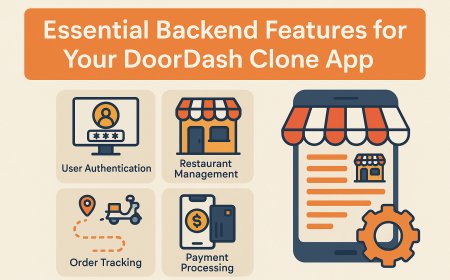How to Secure Firestore Data
How to Secure Firestore Data Firestore is a powerful, scalable NoSQL document database offered by Google Cloud, widely used in modern web and mobile applications due to its real-time synchronization, flexible data structure, and seamless integration with Firebase and other Google services. However, its ease of use and cloud-native architecture also make it a prime target for misconfigurations and
How to Secure Firestore Data
Firestore is a powerful, scalable NoSQL document database offered by Google Cloud, widely used in modern web and mobile applications due to its real-time synchronization, flexible data structure, and seamless integration with Firebase and other Google services. However, its ease of use and cloud-native architecture also make it a prime target for misconfigurations and security breaches if not properly secured. Without adequate access controls, attackers can read, modify, or delete sensitive data—leading to data leaks, financial loss, reputational damage, or regulatory violations.
Securing Firestore data is not optional—it’s essential. Whether you’re building a social media app, an e-commerce platform, or an enterprise SaaS tool, understanding how to enforce granular, context-aware access rules is critical to protecting user privacy and maintaining system integrity. This guide provides a comprehensive, step-by-step roadmap to securing Firestore data, covering configuration, best practices, real-world examples, and tools to help you build a robust, production-ready security posture.
Step-by-Step Guide
Understand Firestore Security Rules Basics
Firestore uses a rule-based system called Firestore Security Rules to control access to documents and collections. These rules are written in a domain-specific language (DSL) and are deployed to the cloud, where they are enforced at the server level—regardless of the client application making the request.
Every Firestore request—read, write, update, delete—is evaluated against these rules. If any rule denies access, the request fails with a permission error. Rules are evaluated at the document level and can cascade to collections and subcollections.
Rules are defined in a file named firestore.rules and deployed via the Firebase CLI, Firebase Console, or CI/CD pipelines. They consist of two main components:
- Match statements – Define which paths (collections or documents) the rule applies to.
- Allow statements – Specify which operations (read, write, create, update, delete) are permitted under what conditions.
Example of a basic rule:
rules_version = '2';
service cloud.firestore {
match /databases/{database}/documents {
match /users/{userId} {
allow read, write: if request.auth != null && request.auth.uid == userId;
}
}
}
This rule allows a user to read or write only their own document in the /users collection, provided they are authenticated.
Enable Firebase Authentication
Firestore security rules rely heavily on Firebase Authentication to determine user identity. Before writing complex rules, ensure Firebase Auth is properly configured in your project.
Go to the Firebase Console, select your project, and navigate to Authentication > Sign-in method. Enable at least one provider:
- Email/Password
- Google Sign-In
- Apple Sign-In
- Phone Authentication
- OAuth providers (Facebook, Twitter, etc.)
Once enabled, your client applications must authenticate users before attempting to read or write Firestore data. Use the Firebase SDKs (Web, Android, iOS) to handle sign-in flows. After successful authentication, the user’s UID is available in Firestore rules via request.auth.uid.
Never assume client-side code is secure. Even if your app hides UI elements, a malicious actor can bypass frontend logic and send raw requests to Firestore. Always enforce rules server-side.
Apply the Principle of Least Privilege
Least privilege means granting users the minimum level of access required to perform their task. In Firestore, this translates to avoiding broad rules like allow read, write: if true;—a common beginner mistake that leaves your database wide open.
Instead, define precise rules per collection and document. For example:
- Users should only read/write their own profile data.
- Admins can read all user data but cannot delete it.
- Public posts are readable by anyone, but only the author can edit or delete them.
Example: Restricting access to a /posts collection:
match /posts/{postId} {
allow read: if true; // Anyone can read public posts
allow write: if request.auth != null && request.auth.uid == resource.data.authorId;
}
This rule allows anyone to read posts (useful for public content), but only authenticated users who are the original author can modify or delete their own posts.
Use Request and Resource Variables Effectively
Firestore rules provide two critical built-in variables:
request– Contains information about the incoming request: auth user, timestamp, IP address, and data being sent.resource– Represents the current document’s data before the write operation.
Use these to validate data integrity and enforce business logic.
Example: Prevent users from changing the author field of a post:
match /posts/{postId} {
allow write: if request.auth != null &&
request.auth.uid == resource.data.authorId &&
request.resource.data.authorId == resource.data.authorId; // Prevent author change
}
Here, request.resource.data.authorId is the new value being sent in the write request, and resource.data.authorId is the existing value. By comparing them, you prevent unauthorized changes to critical fields.
Restrict Access to Subcollections
Firestore allows documents to have nested subcollections. Rules do not automatically inherit from parent documents. You must explicitly define rules for each level.
For example, if a user document has a subcollection /posts, you must write rules for both:
match /users/{userId} {
allow read, write: if request.auth.uid == userId;
}
match /users/{userId}/posts/{postId} {
allow read: if true;
allow write: if request.auth.uid == userId;
}
Without the second rule, even authenticated users cannot write to the subcollection, even if they own the parent document. This is a frequent source of bugs in production apps.
Validate Data Structure with Request Resource
Malicious clients may attempt to inject malformed or unexpected data. Use request.resource.data to validate the structure of incoming documents.
Example: Enforce required fields for a user profile:
match /users/{userId} {
allow create: if request.auth != null &&
request.auth.uid == userId &&
request.resource.data.displayName is string &&
request.resource.data.email is string &&
request.resource.data.createdAt is timestamp &&
request.resource.data.email.matches('.+@.+\\..+') &&
request.resource.data.displayName.size() > 0;
}
This rule ensures that:
- The user is authenticated.
- The document contains a non-empty string for displayName.
- The email is a valid format using regex.
- The createdAt field is a timestamp.
These validations prevent data corruption and reduce the risk of injection attacks or malformed queries.
Use Functions for Complex Logic
Firestore rules have limitations: no loops, no external API calls, and limited string manipulation. For complex logic, use custom functions to encapsulate reusable conditions.
Example: Define a function to check if a user is an admin:
function isAdmin() {
return request.auth.token.admin == true;
}
function isOwner(userId) {
return request.auth.uid == userId;
}
match /users/{userId} {
allow read: if isOwner(userId) || isAdmin();
allow write: if isOwner(userId);
}
match /admin/settings {
allow read, write: if isAdmin();
}
Here, the isAdmin() function checks for a custom claim in the user’s JWT token. You must set this claim server-side using the Firebase Admin SDK:
const admin = require('firebase-admin');
admin.initializeApp();
await admin.auth().setCustomUserClaims(uid, { admin: true });
Custom claims are cached in the user’s token and updated only after the next sign-in. This makes them ideal for role-based access control (RBAC).
Test Rules Before Deployment
Never deploy security rules without testing. Firestore provides a powerful Rules Simulator in the Firebase Console.
To use it:
- Go to the Firebase Console > Firestore > Rules.
- Click Simulate in the top-right corner.
- Choose a path (e.g.,
/users/abc123). - Select a method (read, write).
- Set authentication state: authenticated/unauthenticated, and specify a UID.
- Provide mock data in the request payload.
Test edge cases:
- Unauthenticated user trying to read a private document.
- Authenticated user trying to modify another user’s data.
- Malformed request with missing or extra fields.
- Write request attempting to change a protected field.
Always simulate both successful and failed scenarios. A single misconfigured rule can expose your entire database.
Deploy Rules with Version Control
Store your firestore.rules file in your project’s source code repository (e.g., Git). Use CI/CD pipelines to deploy rules alongside your application code to ensure consistency and auditability.
Example deployment command using Firebase CLI:
firebase deploy --only firestore:rules
Use environment-specific rule files (e.g., firestore.rules.prod, firestore.rules.dev) and deploy them conditionally based on the environment.
Never edit rules directly in the Firebase Console for production apps. Manual edits bypass version control and make rollbacks difficult.
Best Practices
Never Use Public Rules in Production
Rules like allow read, write: if true; are acceptable only during development. In production, they expose your entire database to the public internet. Attackers can scrape data, inject malicious content, or delete records in seconds.
Always lock down access before launching your app. Even if you think “no one will find it,” automated bots scan for open Firestore instances daily.
Use Firestore Indexes Wisely
While not directly a security feature, improper indexing can lead to performance issues that indirectly impact security. For example, if a query fails due to missing indexes, your app may fall back to insecure fallback mechanisms (e.g., exposing all data via a cloud function).
Always test queries in development and let Firestore suggest missing indexes. Deploy them alongside your rules.
Implement Rate Limiting via Cloud Functions
Firestore rules do not support rate limiting. To prevent brute-force attacks or spam, use Firebase Cloud Functions to enforce limits on write operations.
Example: Limit one post per user per minute:
exports.limitPostCreation = functions.firestore
.document('posts/{postId}')
.onCreate(async (snap, context) => {
const userId = snap.data().authorId;
const now = Date.now();
const oneMinuteAgo = now - 60000;
const postsRef = admin.firestore().collection('posts').where('authorId', '==', userId);
const postsSnapshot = await postsRef.where('createdAt', '>=', oneMinuteAgo).get();
if (postsSnapshot.size >= 1) {
await snap.ref.delete(); // Delete the post
throw new functions.https.HttpsError('failed-precondition', 'Post limit exceeded');
}
});
Combine this with Firestore rules that require authentication to ensure only legitimate users can trigger the function.
Audit Access Logs Regularly
Enable Cloud Logging for Firestore to monitor access patterns. Go to the Google Cloud Console > Logging > Logs Explorer. Filter for resource.type="firestore".
Look for:
- High volumes of failed read/write requests (potential scanning or brute-force attempts).
- Access from unusual geographic locations or IP ranges.
- Requests with missing or invalid authentication tokens.
Set up alerts for suspicious activity using Cloud Monitoring.
Use Custom Claims for Role-Based Access
Instead of storing roles in documents (which can be tampered with), use Firebase Custom Claims to define user roles. These are stored in the user’s authentication token and verified server-side.
Roles like admin, moderator, premium should be managed exclusively via the Admin SDK, not exposed to clients.
Example rule for premium users:
function isPremium() {
return request.auth.token.premium == true;
}
match /premium/content/{contentId} {
allow read: if isPremium();
}
Encrypt Sensitive Data Before Storage
Firestore does not encrypt data at rest by default beyond Google’s standard infrastructure encryption. For highly sensitive data (e.g., SSNs, medical records, financial info), encrypt it client-side before writing to Firestore.
Use libraries like libsodium or Web Crypto API to encrypt data with a user-specific key. Store the encrypted blob in Firestore and decrypt only on trusted devices.
Never store encryption keys in client code. Use key derivation from user passwords or secure key storage (e.g., Android Keystore, iOS Keychain).
Regularly Review and Update Rules
As your app evolves, so should your security rules. Add new collections? Update rules. Change data structure? Update validation. Add new user roles? Update custom claims.
Establish a quarterly review cycle. Document all rule changes and the reasoning behind them. Use pull requests and peer reviews for rule modifications.
Disable Test Mode in Production
Some developers enable test mode during development and forget to disable it. Test mode allows unrestricted access and should never be used in production.
Always verify your rules file does not contain:
allow read, write: if true;
or any equivalent wildcard that grants unrestricted access.
Tools and Resources
Firebase Console Rules Simulator
The built-in simulator is your first line of defense. It allows you to test rules against mock requests without deploying code. Access it via the Firestore > Rules tab in the Firebase Console.
Firebase CLI
The Firebase Command Line Interface allows you to deploy, test, and manage Firestore rules locally. Install it via npm:
npm install -g firebase-tools
Useful commands:
firebase login– Authenticate your CLI.firebase init firestore– Initialize Firestore rules file.firebase deploy --only firestore:rules– Deploy rules.firebase emulators:start– Run local emulators for testing.
Firestore Emulator Suite
Run a local instance of Firestore with security rules applied. This lets you test your app’s behavior with real rules without affecting production data.
Start the emulator:
firebase emulators:start --only firestore
Connect your app to the emulator by setting the Firebase config to point to localhost:8080.
FireRules (Third-party Linter)
FireRules is an open-source linter for Firestore security rules. It detects common vulnerabilities like overly permissive rules, missing authentication checks, and insecure wildcards.
Install via npm:
npm install -g firerules
Run:
firerules check firestore.rules
It outputs warnings and suggestions to harden your rules.
Google Cloud Security Command Center
For enterprise users, Security Command Center provides centralized visibility into security posture across Google Cloud services, including Firestore. It can detect misconfigured access policies and recommend fixes.
OWASP Mobile Top 10 and Web Top 10
Reference the OWASP Top 10 for common web and mobile vulnerabilities. Many Firestore security issues align with A03:2021-Injection, A05:2021-Security Misconfiguration, and A08:2021-Software and Data Integrity Failures.
Firestore Documentation
Always refer to the official Firestore Security Rules documentation for syntax updates, new features (like function overloads), and best practices.
Real Examples
Example 1: Social Media App
Scenario: Users can post content, follow others, and comment. Only the post owner can delete their post. Comments are public but require authentication to create.
Rules:
rules_version = '2';
service cloud.firestore {
match /databases/{database}/documents {
// Users can only read/write their own profile
match /users/{userId} {
allow read, write: if request.auth.uid == userId;
}
// Posts are public, but only owner can modify
match /posts/{postId} {
allow read: if true;
allow create: if request.auth != null;
allow update, delete: if request.auth.uid == resource.data.authorId;
}
// Comments require auth, and user must own the post or be the commenter
match /posts/{postId}/comments/{commentId} {
allow read: if true;
allow create: if request.auth != null;
allow update, delete: if request.auth.uid == resource.data.userId;
}
// Followers are managed by a separate collection
match /followers/{userId}/{followerId} {
allow read: if request.auth.uid == userId || request.auth.uid == followerId;
allow write: if request.auth.uid == userId && request.auth.uid != request.auth.token.sub;
}
}
}
Example 2: Healthcare Appointment System
Scenario: Patients can view their own appointments. Doctors can view appointments for their patients. Admins can view all.
Rules:
function isDoctor() {
return request.auth.token.role == "doctor";
}
function isPatient() {
return request.auth.token.role == "patient";
}
function isAdmin() {
return request.auth.token.role == "admin";
}
function isPatientOfDoctor(patientId) {
return request.auth.uid == patientId ||
(isDoctor() && request.auth.uid in resource.data.doctorIds);
}
match /appointments/{appointmentId} {
allow read: if isPatient() && request.auth.uid == resource.data.patientId ||
isDoctor() && request.auth.uid in resource.data.doctorIds ||
isAdmin();
allow write: if isAdmin();
}
Here, doctorIds is an array field in the appointment document listing all doctors assigned to that appointment. Custom claims are used to define roles, and data validation ensures only authorized users can view records.
Example 3: E-Commerce Product Reviews
Scenario: Customers can write reviews for products they’ve purchased. Reviews are public, but only the reviewer can edit or delete them.
Rules:
match /products/{productId}/reviews/{reviewId} {
allow read: if true;
allow create: if request.auth != null &&
request.auth.uid in request.resource.data.purchasedBy; // Must have purchased
allow update, delete: if request.auth.uid == resource.data.userId;
}
// Ensure the review includes a valid purchase ID
match /products/{productId}/reviews/{reviewId} {
allow create: if request.auth != null &&
request.resource.data.purchasedBy != null &&
request.resource.data.purchasedBy.size() > 0 &&
request.resource.data.rating >= 1 && request.resource.data.rating <= 5;
}
This requires the client to pass a list of purchased product IDs when creating a review—enforced by the backend during order fulfillment.
FAQs
Can I secure Firestore without Firebase Authentication?
No. Firestore rules rely on request.auth to identify users. Without Firebase Auth or another identity provider integrated via custom tokens, you cannot enforce user-specific access. Anonymous authentication is acceptable for guest access, but never leave rules open to unauthenticated users in production.
Do Firestore rules protect against SQL injection?
Firestore is a NoSQL database and does not use SQL, so traditional SQL injection does not apply. However, malicious data injection (e.g., inserting malformed JSON, large arrays, or nested objects) can still cause performance issues or data corruption. Use request.resource.data validation to prevent this.
What happens if I make a mistake in my rules?
Firestore rules are strict. A syntax error or logical flaw will cause all requests to fail with permission denied. Always test in the simulator before deploying. Use the emulator to test locally. If you break access, revert to a known-good version using version control.
Can I use Firestore rules to limit the number of documents a user can create?
Firestore rules cannot count documents directly. To enforce limits (e.g., “only 5 posts per user”), you must use a Cloud Function that counts existing documents and rejects writes if the limit is exceeded.
Are Firestore rules enough for compliance with GDPR or HIPAA?
Firestore rules are necessary but not sufficient. Compliance requires additional measures: data encryption, audit logs, data retention policies, user consent mechanisms, and data processing agreements. Firestore alone does not guarantee compliance—your application architecture and data handling practices must align with regulatory requirements.
How often should I update my Firestore rules?
Update rules whenever your data model, user roles, or business logic change. At minimum, review rules quarterly. Add rules for new collections immediately upon creation. Never delay rule updates for new features.
Can I use Firestore rules with Cloud Functions?
Yes, but with caution. Cloud Functions use the Admin SDK, which bypasses Firestore rules entirely. If you use Cloud Functions to write to Firestore, ensure they validate input and enforce access control internally. Never rely on Firestore rules to protect data written by Admin SDK operations.
Conclusion
Securing Firestore data is not a one-time task—it’s an ongoing discipline that requires vigilance, testing, and continuous improvement. The power of Firestore lies in its flexibility and real-time capabilities, but that same flexibility can become a liability if access controls are poorly designed or neglected.
By following the principles outlined in this guide—enabling Firebase Authentication, applying least privilege, validating data structure, using custom functions, testing rigorously, and leveraging tools like the Rules Simulator and FireRules—you can build a secure, scalable, and trustworthy application.
Remember: security is not a feature. It’s the foundation. Every document you store holds user trust. Protect it like you would your own data.
Start with the basics. Test everything. Review often. And never assume your data is safe just because your app looks polished. The most elegant interfaces can hide the most dangerous vulnerabilities.
With the right approach, Firestore can be one of the most secure databases you’ll ever use. The tools are there. The knowledge is now in your hands. Go build securely.





































